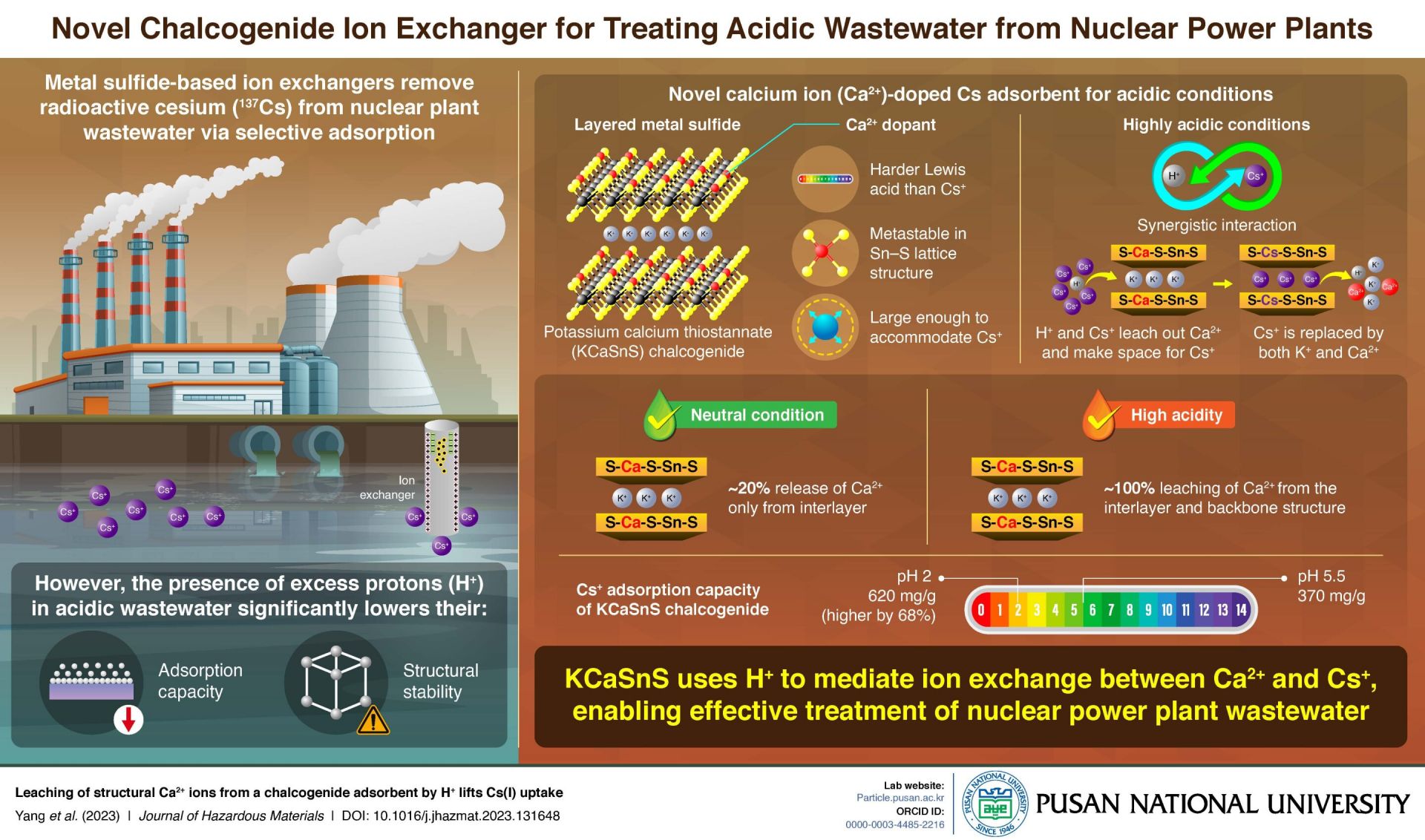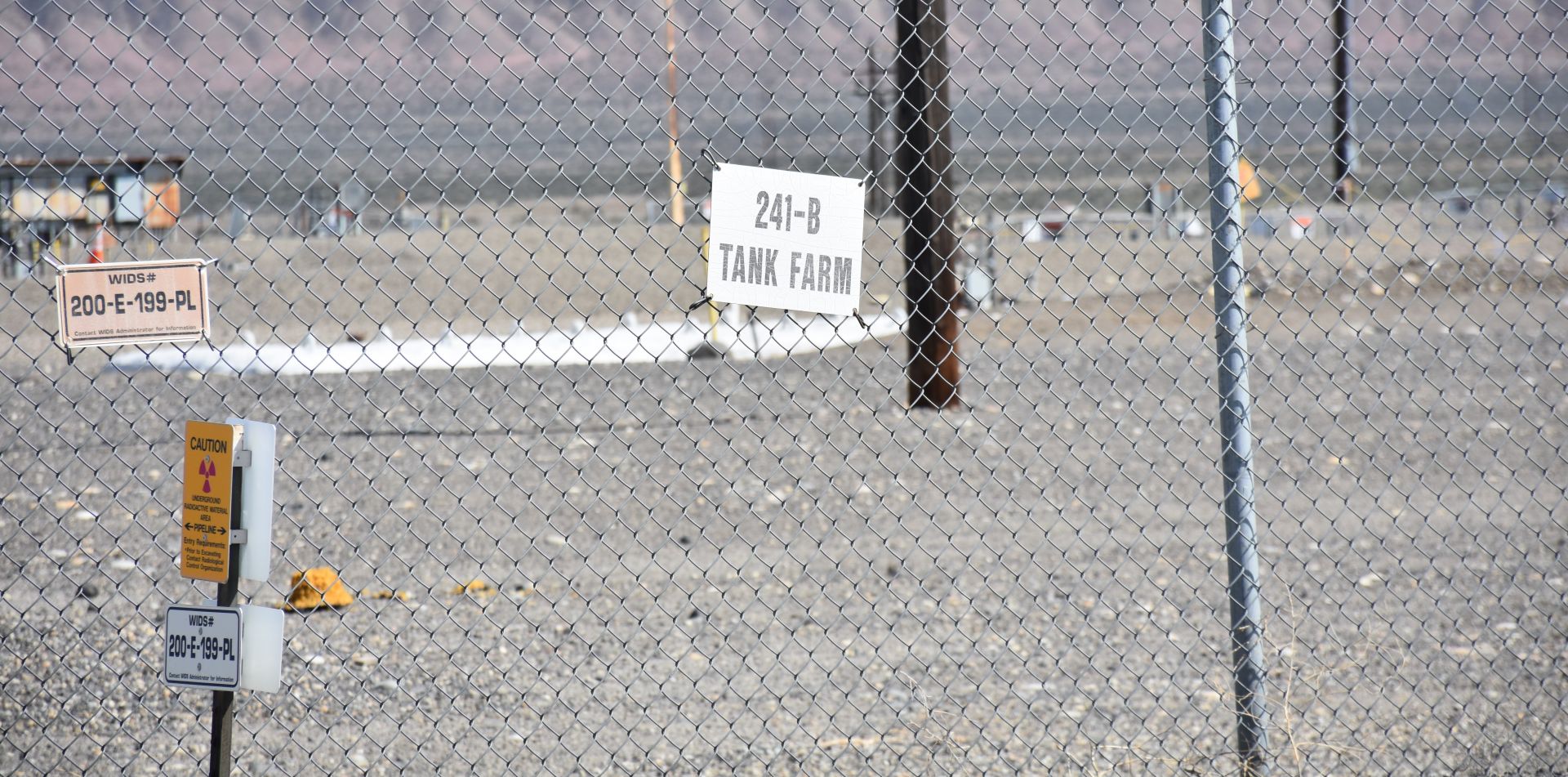(Image: Kuk Cho/Pusan National University)
Researchers from the Pusan National University in South Korea have developed a new calcium-doped ion exchanger for the removal of radioactive cesium from acidic nuclear power plant wastewater. The findings have the potential for developing more efficient and effective methods of remediating radioactive contamination.
The Waste Isolation Pilot Plant, near Carlsbad, N.M. (Photo: DOE)
The Department of Energy’s Office of Environmental Management and the New Mexico Environment Department (NMED) have negotiated a settlement on terms to renew the 10-year operating permit for the Waste Isolation Pilot Plant near Carlsbad, N.M. The DOE, along with WIPP’s operating contractor, Salado Isolation Mining Contractors, and the NMED negotiated the settlement with New Mexico stakeholders.
Concept art showing a geological disposal facility with tunnels and vaults in deep underground rock, under the seabed. (Image: NWS)
Nuclear Waste Services, the United Kingdom’s radioactive waste management organization, launched in January 2022, has begun a wide range of studies to evaluate sites that could be suitable to host a geological disposal facility (GDF).
Diagram of the Cigéo repository in France. (Image: Andra)
Having deemed the application admissible, France’s nuclear safety authority, Autorité de sûreté nucléaire (ASN), will undertake a technical appraisal of Andra’s application to construct the Cigéo deep geological disposal facility for radioactive waste.
Hanford’s Waste Treatment and Immobilization Plant. (Photo: DOE)
A pair of recent reports by the U.S. Government Accountability Office and the National Academies of Science, Engineering, and Medicine highlight some of the challenges the Department of Energy faces in treating the millions of gallons of legacy radioactive waste at the Hanford Site in Washington state.
DOE-EM’s Greg Sosson (standing) views Integrated Waste Treatment activity during the facility’s first day of radiological operations. (Photo: DOE)
After initial runs using a mix of radiological waste and nonradioactive simulant, the Integrated Waste Treatment Unit (IWTU) at the Idaho National Laboratory site has progressed to treating sodium-bearing waste entirely, the Department of Energy’s Office of Environmental Management (DOE-EM) announced on May 22.
The NWMO’s Laurie Swami (left) and the DOE’s Kathryn Huff sign a statement of intent to cooperate on used nuclear fuel management in Washington, D.C., on May 16. (Photo: CNW Group/NWMO)
The United States and Canada will cooperate on spent nuclear fuel management under a statement of intent (SOI) signed between the U.S. Department of Energy and the Nuclear Waste Management Organization, the nonprofit responsible for the management of Canada’s commercial spent fuel.
DOE-EM officials, IWTU employees, and others signed the first stainless steel canister prior to crews filling it with sodium-bearing waste and simulant. Once filled, that canister and 15 others were placed in a concrete vault for storage. (Photo: DOE)
Since the launch of operations just over a month ago, the Integrated Waste Treatment Unit (IWTU) at Idaho National Laboratory has increased sodium-bearing waste treatment fivefold. This activity is a vital step in removing the remaining liquid waste from nearby underground tanks at the site and protecting the underlying Snake River Plain Aquifer.
The Hanford Site’s B Complex area tank farm containing waste created during the production of plutonium at the site. (Photo: DOE)
After nearly three years of discussions and more than 60 mediation sessions, the Department of Energy, Washington State Department of Ecology, and the Environmental Protection Agency announced that they have reached a conceptual agreement on revising plans for managing millions of gallons of waste stored in tanks at the Hanford Site near Richland, Wash.
A CAST Specialty Transportation truck delivering TRU waste packages to WIPP. (Photo: DOE)
The Department of Energy’s Waste Isolation Pilot Plant (WIPP) recently marked a milestone after its drivers exceeded 16 million safe miles without a serious accident or injury—equivalent to 33 round trips to the moon or more than 642 trips around the world, the DOE’s Office of Environmental Management announced.







 Atomic Energy of Canada Limited (AECL), Canadian Nuclear Laboratories (CNL), and the Algonquins of Pikwakanagan First Nation (AOPFN) have signed a long-term relationship agreement that aims to foster mutual respect, collaboration, and economic opportunities between Canada’s indigenous communities and the nuclear industry.
Atomic Energy of Canada Limited (AECL), Canadian Nuclear Laboratories (CNL), and the Algonquins of Pikwakanagan First Nation (AOPFN) have signed a long-term relationship agreement that aims to foster mutual respect, collaboration, and economic opportunities between Canada’s indigenous communities and the nuclear industry.




